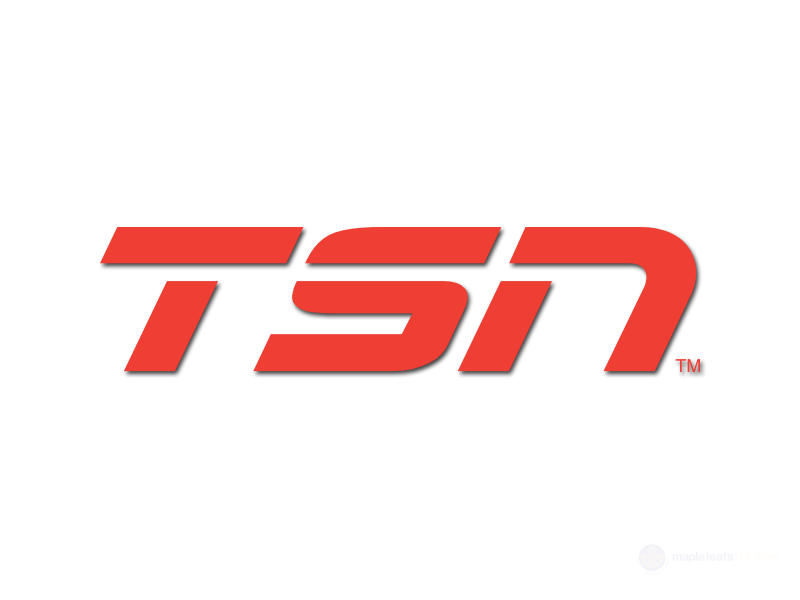Hockey Abstract author, Rob Vollman, was on TSN radio talking Leafs, coaching impact, player deployment and much more.
In the cap world, if you’re not a good team, is there something to keeping your prospects down longer just in terms of economics and entry-level contracts, and the value there?
There are a lot of advantages to players that are young on entry-level contracts. Their salary is capped, and even with bonuses their cap hit is really small compared to their potential value. Even once they become RFAs, other teams can’t just grab those players without giving you a bunch of picks in exchange. There’s real value in carefully managing those entry-level contracts, and making sure that the players are only entering the NHL when they can provide that value. With that being said, players are eager to play in the NHL, and if you’re keeping them off the team just to maximize the contractual value of your team, I don’t think they’re going to want to play for you. That’s going to perhaps hurt their attitude a little bit.
We saw a flashpoint with that in the MLB, where [team] kept Chris Bryant down for a couple weeks and then they brought him up for contractual reasons. If I were the Leafs, I would keep William Nylander in the minors the whole year just based on a lot of factors – patience, economics, everything like that. Part of my case is I just don’t see the value in bringing him onto a bad team if you don’t have to. Do you agree, or do you think if he’s ready, he’s ready?
From a contractual standpoint, from a roster management standpoint, I absolutely agree. However, when it comes to the actual coaches and players, it might be a different story. It might be very difficult to explain to a young player that he’s good enough to contribute to the team, and he’s actually better than some of the players that you’re using, but you’re not going to use him in order to save a buck or two in some future contract negotiation. I think that’s a hard conversation to have. For that reason, if Nylander is good enough to make the team – even if it makes more sense from a cap management position to keep him off the team – it’s going to be hard to tell a young man that he can’t be on the team.
A lot of people around here are of the impression that, with the new coaching staff – with Mike Babcock and company – that there will be a better defensive team. One of the things they have to be better at is the powerplay and penalty kill. Powerplay, you don’t have Phil Kessel, so that might be more difficult, but with the penalty kill – they allowed the third most shots on goal, the other two were Buffalo and Arizona. How much better could they be considering the personnel isn’t all that different from what they had last year?
That’s a good question. You’re alluding a little bit to the Hockey Abstract checklist that I have in this update that just came out, where I don’t measure penalty kills based on the penalty killing percentage because we’re only talking about 30-40-50 goals. A few bad breaks here and there, a few cold goalies here and there, could really skew your penalty killing percentage, which is why it is better to look at the number of shots that are being allowed, or attempted shots, or scoring chances – just something that’s a bit more numerous. In that regard, you’re right, Toronto has really been down in the basement. They’ve got to find a way to improve that. In my mind, it’s really built around that blueline. At even strength, your defencemen are only two of the five players, but on the penalty kill they’re half the players out there and they’re the really key players when it comes to preventing shots. That’s really an area, in general, where the Leafs need to build on – improving that blueline defensively. The penalty kill, I think, is just magnifying that issue.
How much of an effect can a coach like Mike Babcock have on a team in terms of results at the end of the year? How can we quantify that?
There’s no consensus in the statistical community on just how much impact a coach has, but I’ll give you my own analysis. I actually did invent a statistic in a previous version of Hockey Abstract that measures coaches. In that regard, you’re talking about four or five points in the standings for a pretty decent coach. When everything comes together, it can be up to ten points in the standings. It makes a lot of sense for a team like Toronto, that has a lot of money, to invest in a coaching staff. That doesn’t fall within the salary cap. You can spend as much money as you want. By the way, I say the entire coaching staff, not just Mike Babcock, because some of those points in the standings aren’t coming from the head coach. They could be coming from the special teams coach, it could be coming from the goalie coach. You really have to look at the staff as a whole, and not just the head coach himself. In fact, I believe the Jack Adams Award should be awarded to coaching staffs and not just the head coach.
In terms of philosophy with Mike Babcock, as opposed to Randy Carlyle, I expect a Mike Babcock team to have the puck more and defend less. Is that a fair way to sum up what the expectation should at least start with?
I think that’s fair, and partly because you’re not just looking at the Detroit Red Wings, who had a certain set of assets that were different than Toronto’s. In reaching that conclusion, you probably drew all the way back on his experience in Anaheim and looking for sort of the common threads there. You’re absolutely right. Babcock’s coached teams generally focus on puck possession more than his predecessors and/or successors have.
You wrote about this particular team, and I can’t say I argue with you on this, and I quote, “they need a top-four defenceman… or three.” It gets me back to the draft, which I guess is a fair question. They get to that fourth pick, Mitch Marner and Noah Hanifin [are there]. I’m guessing you thought they made the wrong decision?
No, absolutely not. I’m in the camp that [believes] you pick the best player available. You don’t know what your organization is going to need in 2020, when that player is starting to hit their stride. You get the player that is the best player available. If there is any disappointment – I don’t know what’s going on behind the scenes, Toronto may have been pursuing defencemen aggressively and just failed to really come up with a good deal that worked for the team and the organization – but it would’ve been nice for them to identify one more top-four defenceman. The three was more a tongue-in-cheek joke. Adding guys like Matt Hunwick and Martin Marincin, I think those are really, really solid pick ups to round out the depth and they really do deserve a thumbs up for that, but they need a legitimate top-four guy because Dion Phaneuf is just absolutely being buried out there and has been for years with an assignment that I think is way too heavy for him.
How much can a coach work and change things in terms of the way players are used on a day-to-day basis? We saw Jay McClement here overused by Randy Carlyle just because it was a guy he trusted.
I think coaches can have a lot of impact in terms of player usage, just in terms of which zone you’re using the players in and line matching against opponents. Earlier in our call, you talked about the penalty kill – Babcock is a good example of that. In Detroit, rather than use Datsyuk and Zetterberg – who are absolutely amazing on the penalty kill – he actually used more his depth players, like Darren Helm and so on, in order to save Datsyuk and Zetterberg for even-strength and the powerplay. Applying that same principle to the Toronto Maple Leafs, it’s possible he might try to find more advantageous situations for Dion Phaneuf and let someone else carry more of the defensive burden.
We saw a different type of free agency this summer. Less crazy deals, more logical deals, but I wonder about goaltenders. Do you think we might see a difference in the way goaltenders are paid in terms of some of these long-term contracts?
I’ve actually got a book coming out next year with ECW press – so it’s actually going to be on the shelves – and in that I’m taking a closer look at one of those questions. My opinion is that goalies are crapshoots. They are the most important player on your team, and yet no one can really predict how well they’re going to perform. As a result, it’s hard to justify spending big money on your goalie unless you happen to have one of the three guys or so that really are elite, and that you really do know are fantastic, like Price, Rask, and Lundqvist. Unless you’ve got your hands on one of those guys, it’s pretty much a gamble. You might be better off investing a little bit less on your goalies and using those savings to put a better blueline in front of them.

































